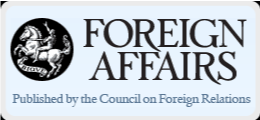“Education is the most powerful weapon which you can use to change the world.”
– Nelson Mandela
Education has always been a cornerstone of a country’s economic development program. And for millions of families around the world, especially in developing economies, education is seen as a sure way to improve their lives.
In the last two decades, there has been a sharp rise in the number of students seeking an education abroad. The appeal is clear. Whether it is to acquire a specialized degree from a prestigious school or gain a wide perspective of the world, millions of students have a thirst to venture beyond familiar territory.
As an effective agent of global change, international education helps students transcend barriers – both geographic and cultural. It fosters greater understanding among individuals with very different experiences and backgrounds. It facilitates the sharing of knowledge and skills.
As of 2019, there were an estimate 5.5 million international students around the world, a significant percentage of which came from China. As the middle class continues to expand in the world’s largest economy, more parents seek an international education for their children.
Meanwhile, technological advances have increased accessibility to quality education. The Internet has made possible distance learning. This year, as the COVID-19 global pandemic carries on, the Internet has allowed schools to continue conducting their courses, giving rise to a new idea in education: blended learning.
Traditional on-site classes may be on hold for now in many places. But 2020 has shown the world one thing: Schools were well-equipped to adapt quickly to a major disruption. That could not have happened were it not for an innovative mindset and for technology, developed and improved upon over several decades by students and scientists from universities around the world, all with a shared commitment to education and a clear vision of its objective.
With this guide, GMI Post hopes to provide parents and students in China with information that will help them decide which educational institutions in Australia, Canada, New Zealand, and the United Kingdom will best serve their academic objective and warmly welcome them.









